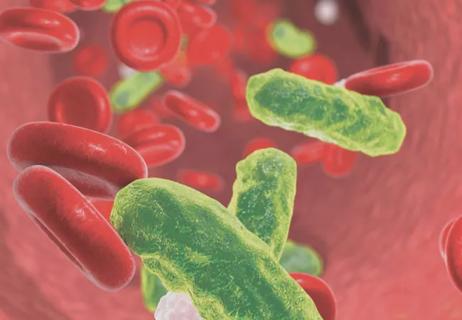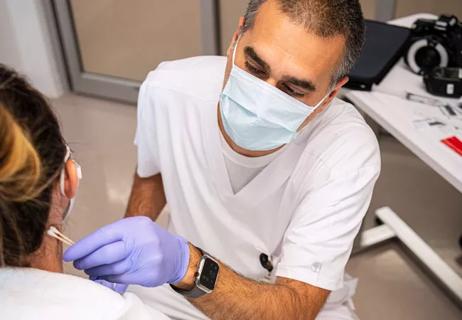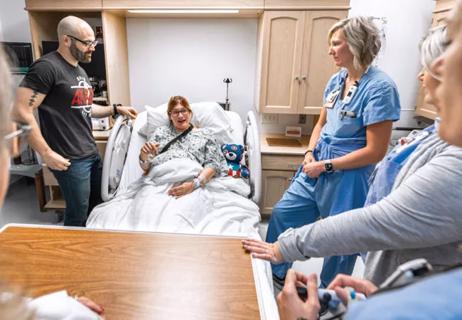How one NICU increased compliance by leaps and bounds

Neonatal intensive care unit (NICU) nurse Connie Schoofs, BSN, RN, saw the stress on a young mother’s face. An alarm was sounding from her baby son’s monitor. Schoofs transferred the baby from the incubator to his mother’s chest and witnessed an amazing transformation.
Cleveland Clinic is a non-profit academic medical center. Advertising on our site helps support our mission. We do not endorse non-Cleveland Clinic products or services. Policy
“The baby’s breathing returned to normal, and the alarm stopped,” says Schoofs, of Cleveland Clinic’s Hillcrest Hospital. “The mother relaxed, too. I could just sense her increased confidence as a mom.”
Kangaroo care, or skin-to-skin contact between a newborn and parent, improves a baby’s physiological stability and weight gain, spurs brain development, boosts immunity and enhances parental bonding, among other benefits.
“Besides breast feeding, kangarooing is one of the most important things we can teach our patients,” says Schoofs. “It benefits all newborns, but especially preterm babies and others in the NICU.”
That’s why the Ohio Perinatal Quality Collaborative (OPQC) recommends that NICUs administer kangaroo care within 21 days of birth, at least 80 percent of the time.
Hillcrest Hospital’s NICU wasn’t even close to the OPQC standard. A chart review by the unit council showed only a 33 percent compliance rate in the second half of 2013.
“The barriers to kangaroo care were twofold,” explains Tina Di Fiore, MSN, APRN, CNP, NNP-BC, CNS. “Parents would see their tiny babies hooked up to medical equipment and think they shouldn’t touch them. Nurses used to believe the safest place for a baby was in an incubator or crib. We now realize the benefits of skin-to-skin contact — and we’re past the fear of moving a baby hooked up to central lines.”
Hillcrest’s NICU council, including several nurses certified in kangaroo care, began working to improve kangaroo care compliance by:
“Besides educating nurses about the importance of kangaroo care, we had to make sure they were charting it correctly and consistently, with start and end times,” says Jackie Ludwig, ADN, RNC, former NICU council chair.
Ludwig credits education and raised awareness with drastically improving her unit’s kangaroo care compliance, specifically for babies born at less than 30 weeks’ gestation. After just six weeks, in early 2014, the unit’s rate of documented kangaroo care for preterm babies jumped to 94.4 percent.
“Success wasn’t just because of one or two nurses championing the cause,” says Di Fiore. “It’s due to the cooperation of our whole team of 120 nurses.”
After consistently surpassing OPQC standards for kangaroo care within the first 21 days of life, Hillcrest Hospital’s NICU raised the bar. In January 2015, they began targeting kangaroo care within the first three days of life. As of June 2015, their compliance was better than 76 percent.
The unit will continue to promote kangaroo care for all of its tiny patients and their families.
“We now have four nurses who are kangaroo care certified, and we’re continuing to send more nurses for certification so we can have a kangaroo care champion available on every shift,” says Joanne Romick, BSN, RN, who has been certified since 2010. “It’s amazing to see moms’ and dads’ smiles once they’ve done kangaroo care. They feel like they’re really participating in their baby’s care.”

Nurses play pivotal role in patients’ ability to recover in the comfort of their own homes

Advocating for patient safety is imperative in fast-paced surgical settings

Advice for those pursuing a WOC nursing career

Redesigned protocols enhance infection-prevention measures

Longevity in healthcare, personal experiences may provide caregivers with false sense of confidence

Specialized team prioritizes trauma-informed care and evidence collection

Collaborative approach leans on expertise of nurses

TeamBirth aims to improve outcomes by facilitating collaboration between patients and caregivers